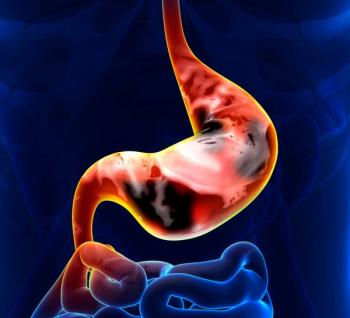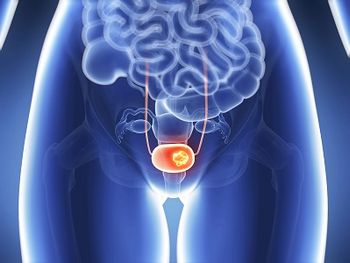
Patients with Multiple Myeloma and CHIP Face Worse Outcomes Following ASCT
However, when followed by immunomodulatory drugs, researchers found that autologous stem cell transplant can be safely used in this patient population, regardless of CHIP status.
Study findings from investigators at the Dana-Farber Cancer Institute indicated that in patients with multiple myeloma treated with autologous stem cell transplant (ASCT), the presence of clonal hematopoiesis of indeterminate potential (CHIP) was associated with worse outcomes compared to those without CHIP.1
However, the study, published in Nature Communications, also suggested that ASCT, when followed by immunomodulatory drugs (IMiD), can be safely used in patients with multiple myeloma, regardless of CHIP status.
“Our findings indicate that the presence of CHIP at the time of transplant is a risk factor for faster disease progression in patients with multiple myeloma undergoing autologous stem cell transplant,” first author Tarek H. Mouhieddine, MD, of Dana-Farber and the Broad Institute of MIT and Harvard, said in a press release.2 “This might suggest that patients should be screened for CHIP in advance of a transplant, but our data also show that immunomodulatory therapy after a transplant is safe regardless of CHIP status.”
Using targeted sequencing of stem cell products from 629 patients with multiple myeloma treated with ASCT at Dana-Farber from 2003 to 2011, CHIP was detected in 136 of 629 patients. The most commonly mutated genes were DNMT3A, TET2, TP53, ASXL1, and PPM1D.
Ultimately, a single CHIP mutation was detected in 116 of the 136 patients (85.3%), while 20 patients (14.7%) were found to have 2 or more mutations in different genes. Similar to previous reports, the presence of CHIP was found to be associated with aging (P < 0.001), reaching a prevalence of 47% in patients over the age of 70. The presence of CHIP was also associated with a history of smoking (P = 0.04), past medical history of cancer (P = 0.04), and a decreased efficiency of stem cell mobilization (5.8 million CD34+ cells/kg/day in those with CHIP compared to 8.3 million CD34+ cells/kg/day in those without CHIP [P = 0.03]).
Of the total study cohort, 376 patients had died at the time of analysis. The median OS and progression-free survival (PFS) of the cohort were 7.1 and 2.5 years, respectively.
Specifically looking at patients with CHIP, the median OS was 5.3 years, which was significantly lower than in those without CHIP (7.5 years; HR, 1.34; P = 0.02, stratified multivariable cox regression model). Notably, CHIP was also associated with a lower median PFS of 2.2 years compared to 2.6 years in those without CHIP (HR, 1.45; P < 0.001, stratified multivariable cox regression model). In addition, researchers also observed a worse OS and PFS in those carrying more than 1 mutation.
Overall, 57% of the patients in the study received first-line IMiD maintenance, with 22% receiving it for at least 3 years (range, 0.1–14.9). First-line IMiD maintenance was associated with a longer median OS of 8.5 years compared to 5.6 years in those not receiving IMiD maintenance (HR; 0.65; 95% CI, 0.52–0.80; P < 0.001). Moreover, IMiD maintenance was associated with a longer PFS of 3.4 years compared to 1.5 years in those not receiving IMiD maintenance (HR, 0.47; 95% CI, 0.39-0.56; P < 0.001).
In patients who did not receive IMiD maintenance, CHIP was associated with a significantly lower median OS of 3.6 years compared to 6.6 years in those who did not have CHIP mutations (P = 0.013, stratified analysis). However, there was no significant difference in those who received maintenance, with a median OS of 7.7 and 8.9 years for CHIP and no CHIP, respectively (P = 0.49, stratified analysis).
Comparably, in patients who did not receive IMiD maintenance, CHIP was associated with a significantly lower median PFS of 1.1 years compared to 1.8 years (P < 0.001, stratified analysis). There was also no difference in PFS among patients with and without CHIP who received IMiD maintenance (median PFS of 3.3 and 3.6 years for CHIP and no CHIP, respectively [P = 0.59, stratified analysis]).
“Altogether, these data suggest that the presence of CHIP at time of ASCT does not increase the risk of [therapy-related myeloid neoplasm; TMN] associated with IMiD maintenance and that patients with CHIP, when treated with IMiD maintenance, obtain a survival benefit similar to that seen in [patients with multiple myeloma] generally,” the authors wrote.
The investigators concluded that further well-controlled prospective clinical trials are necessary to continue evaluating the interaction between CHIP, transplant, and IMiDs on outcomes in patients with multiple myeloma.
References:
1. Mouhieddine TH, Sperling AS, Redd R, et al. Clonal hematopoiesis is associated with adverse outcomes in multiple myeloma patients undergoing transplant. Nature Communications. doi:10.1038/s41467-020-16805-5.
2. Patients with multiple myeloma and CHIP often have worse outcomes following autologous stem cell transplant, study finds [news release]. Dana-Farber Cancer Institute. Published June 12, 2020. dana-farber.org/newsroom/news-releases/2020/patients-with-multiple-myeloma-and-chip-often-have-worse-outcomes-following-autologous-stem-cell-transplant--study-finds/. Accessed June 26, 2020.
Newsletter
Stay up to date on recent advances in the multidisciplinary approach to cancer.


















































































